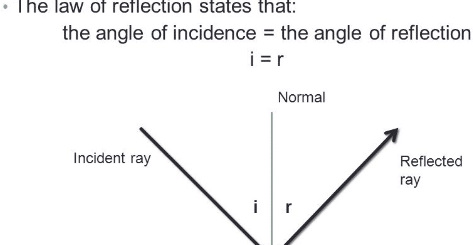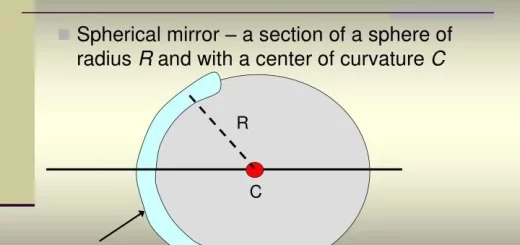What is the light behaviour through different media?, Opaque, transparent and translucent objects
Light is an electromagnetic wave, It is a form of energy that can travel freely across space, where the light rays travel through the vacuum present in the form of a wave when traveling in the transparent medium present in the form of particles.
The light waves
The light travels more slowly through the transparent materials than through a vacuum, so, the light bends as it enters or leaves the glass. Materials can be classified based on how light interacts with them, specifically how much light they allow to pass through.
The light transmits through different media with variable degrees, So, Media can be classified according to their ability to allow the light to pass through, into transparent medium, translucent (semi-transparent) medium, and opaque medium.
The transparent medium
The transparent medium is the medium that permits most light to pass through them with little to no scattering or absorption, the objects can be seen clearly through a transparent medium, and images formed behind the object are undistorted. Examples of transparent materials include the air, the pure water, the glass cup, and the clear glass in a window are called transparent.
The transparent medium transmits all visible light, the color of a transparent object depends on the color of light that transmits, So if red light passes through a transparent object, the emerging light is red.
Although the water is a transparent medium, we can not see fish at the bottom of the sea as the thickness of the water at that point (the bottom) is large enough to prevent the light to pass through, By increasing the thickness of the transparent medium, the quantity of light that passes through it decreases.
The translucent medium
The translucent medium is the medium that permits only a part of the light to pass through and absorbs the remaining part, the objects can be seen through the translucent medium less clearly than the transparent one. but the light is scattered or diffused so that objects behind the translucent material cannot be seen clearly. You can often tell that light is passing through the material because it may appear brighter on the other side, but the details of what is behind the material are obscured.
The materials like frosted glass, wax paper and some types of plastics, flint glass, and tissue paper are called translucent objects, when the light transmits the materials, only some of the light passes through them.
The light does not pass directly through the materials, It changes the direction many times and it is scattered as it passes through, so, we cannot see clearly through them.
The objects on the other side of a translucent object appear fuzzy and unclear, As the translucent objects are semi-transparent, some ultraviolet rays can go through them, this is why a person behind a translucent object can get a sunburn on a sunny day.
The opaque medium
The opaque medium is the medium that does not permit the light to pass through, and the objects can not be seen through the opaque medium.
Most materials are opaque, When the light strikes an opaque object none of it passes through, most of the light is either reflected by the object or absorbed and converted to heat.
Materials such as wood, stone, metals, plant leaves, foil paper, milk, books, cartoon, human skin, and black honey (molasses) are opaque to visible light.
The cartoon is an opaque medium because it does not permit the light to pass through and the objects can not be seen behind it.
What is the light behaviour through different media?
Light behaves in fascinating ways when it travels through different media, which are materials like air, water, or glass.
Refraction of light in water: Light travels slowly in dense mediums like water or glass compared to a vacuum or air. This change in speed causes the light to bend its path, a phenomenon called refraction. This is why a straw appears bent when inserted into a glass of water.
Absorption: Some materials absorb certain wavelengths of light more than others. This is why a red shirt appears red – it absorbs most colors except red, which is reflected in our eyes, The absorbed light energy is converted to heat.
Reflection: When light strikes a surface, it can bounce back. This is reflection. The smoothness of the surface determines the type of reflection. Shiny surfaces like mirrors produce a mirror reflection, where the light ray bounces back at the same angle it hits. Rough surfaces cause diffuse reflection, scattering the light in various directions.
Scattering: Light can be scattered by particles in a medium. This is why the sky appears blue. Blue light has a shorter wavelength and gets scattered more easily by air molecules, reaching our eyes from all directions in the daytime sky. Red light, with a longer wavelength, scatters less and is what we see during sunrises and sunsets when the light travels through a thicker layer of the atmosphere.
Transmission: Light can pass through some materials entirely. This is called transmission. The amount of light transmitted depends on the transparency of the material. Transparent materials allow most light to pass through, while translucent materials allow some light through with some scattering.
The nature of light waves and analysis of white light
Dispersion of White light analysis, Normal prism and thin prism
Applications on the total reflection of light (Optical fibers, Reflecting prism, and Mirage)
Light wave properties, Analysis of white light, Spectrum colours and Light intensity
Types and Laws of light reflection, Regular and Irregular reflection of light
Light refraction effects, Law of light refraction, Mirage and Apparent positions of objects
Laws of light reflection, Plane mirrors, Spherical mirrors, Concave mirror and Convex mirror



